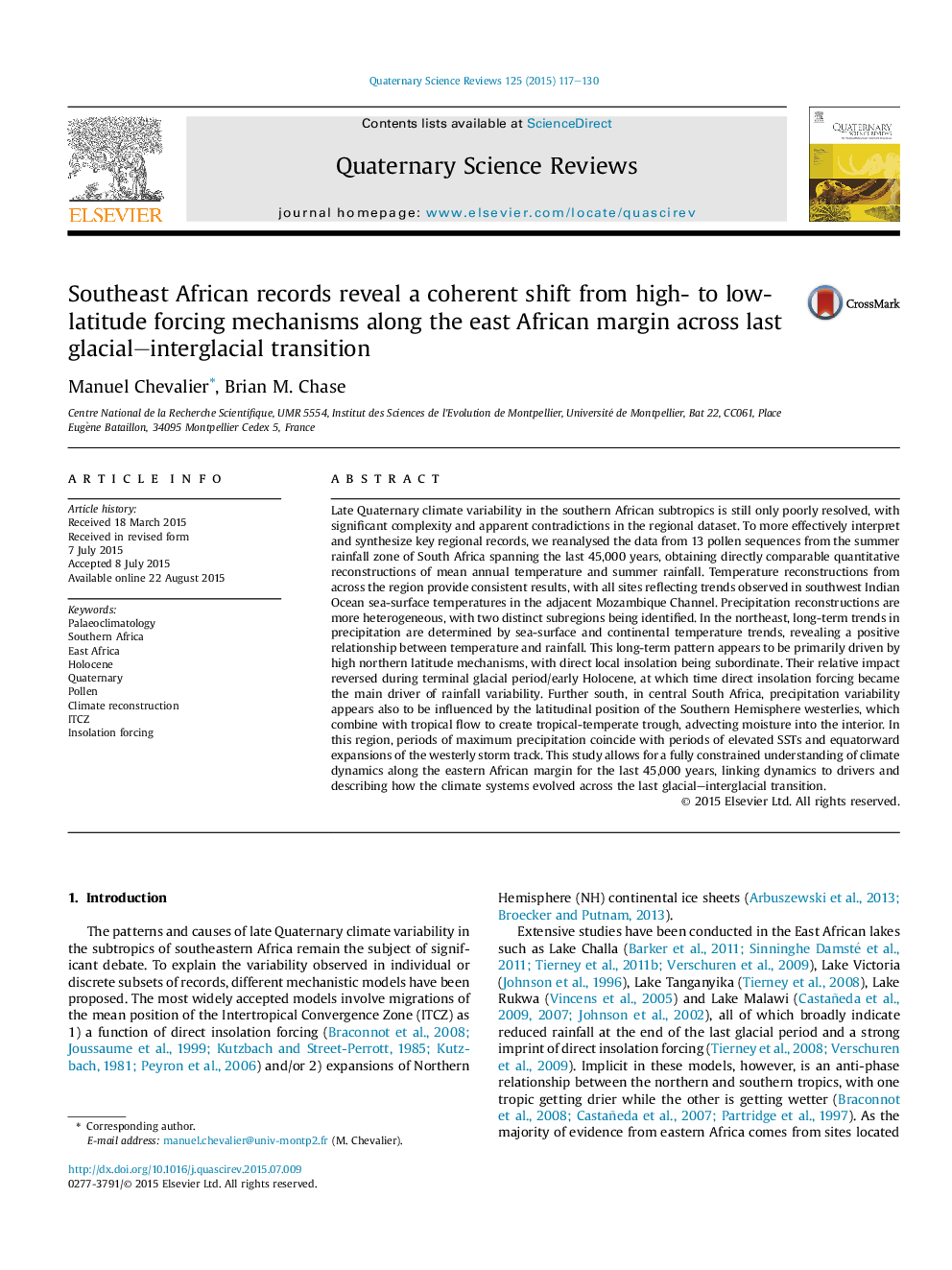| کد مقاله | کد نشریه | سال انتشار | مقاله انگلیسی | نسخه تمام متن |
|---|---|---|---|---|
| 6445495 | 1640809 | 2015 | 14 صفحه PDF | دانلود رایگان |
عنوان انگلیسی مقاله ISI
Southeast African records reveal a coherent shift from high- to low-latitude forcing mechanisms along the east African margin across last glacial-interglacial transition
ترجمه فارسی عنوان
سوابق جنوب آفریقا نشان می دهد یک تغییر منسجم از مکانیزم های اعمال فشار بالا به پایین به طول حاشیه شرق آفریقا در طول گذار گذشت یخبندان
دانلود مقاله + سفارش ترجمه
دانلود مقاله ISI انگلیسی
رایگان برای ایرانیان
کلمات کلیدی
موضوعات مرتبط
مهندسی و علوم پایه
علوم زمین و سیارات
زمین شناسی
چکیده انگلیسی
Late Quaternary climate variability in the southern African subtropics is still only poorly resolved, with significant complexity and apparent contradictions in the regional dataset. To more effectively interpret and synthesize key regional records, we reanalysed the data from 13 pollen sequences from the summer rainfall zone of South Africa spanning the last 45,000 years, obtaining directly comparable quantitative reconstructions of mean annual temperature and summer rainfall. Temperature reconstructions from across the region provide consistent results, with all sites reflecting trends observed in southwest Indian Ocean sea-surface temperatures in the adjacent Mozambique Channel. Precipitation reconstructions are more heterogeneous, with two distinct subregions being identified. In the northeast, long-term trends in precipitation are determined by sea-surface and continental temperature trends, revealing a positive relationship between temperature and rainfall. This long-term pattern appears to be primarily driven by high northern latitude mechanisms, with direct local insolation being subordinate. Their relative impact reversed during terminal glacial period/early Holocene, at which time direct insolation forcing became the main driver of rainfall variability. Further south, in central South Africa, precipitation variability appears also to be influenced by the latitudinal position of the Southern Hemisphere westerlies, which combine with tropical flow to create tropical-temperate trough, advecting moisture into the interior. In this region, periods of maximum precipitation coincide with periods of elevated SSTs and equatorward expansions of the westerly storm track. This study allows for a fully constrained understanding of climate dynamics along the eastern African margin for the last 45,000 years, linking dynamics to drivers and describing how the climate systems evolved across the last glacial-interglacial transition.
ناشر
Database: Elsevier - ScienceDirect (ساینس دایرکت)
Journal: Quaternary Science Reviews - Volume 125, 1 October 2015, Pages 117-130
Journal: Quaternary Science Reviews - Volume 125, 1 October 2015, Pages 117-130
نویسندگان
Manuel Chevalier, Brian M. Chase,
